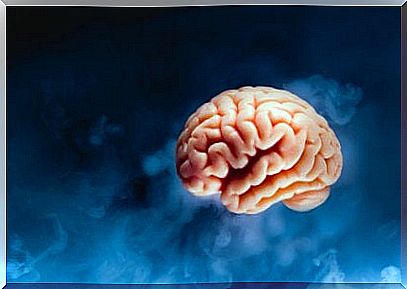Insular Cortex: Lessons Learned From Painful Experiences

Recent studies have shown that the brain’s insular cortex (the area that handles pain) enables our ability to create lessons from painful experiences.
What do you remember from your childhood? The first time you ate candy or your first fight at school? Almost everyone had said the second option.
It seems that people are much better at remembering painful experiences than positive ones.
Thanks to this research, neuroscience has been able to establish a neuro-anatomical basis for already defined cognitive processes.
The connection between the management of painful experiences and the lessons you learn from these experiences seems to be in the insula. The insula is located deep inside the brain and separates the temporal lobe, the parietal lobe and the frontal lobe.

The importance of lessons learned from painful experiences
Evolution has given us an effective survival mechanism called “threat learning”. This type of learning has been of great importance for our survival as a species.
Other species also experience “threat learning” via their respective nervous systems.
The reason why this mechanism protects you is that it remembers past harmful events. This will help you avoid future situations that could be harmful or painful.
It prevents you from making the same mistake twice.
The role of our insular cortex
Researchers have for a long time wondered which part of the brain signals to the other concerning painful events to cause this “threat learning”.
Experts have known for some time that the amygdala plays a role, but there are still some connections that have not been investigated.
The researchers knew that the amygdala was important for the emotional evaluation of the stimulus. However, they still had not discovered which part of the brain controlled everything.
The research finally showed that the brain’s insular cortex has the task of sending alarm signals for these events.
Although there is evidence for the relationship between the amygdala neurons and the insular neurons, researchers have only just begun to study their function.
In the studies we mentioned above, the researchers used rats because their insular cortex resembles that of humans.
They discovered that the rats were no longer afraid of future painful events when the brain’s insular cortex was disconnected during the painful events.
It was also found that lab rats but disconnected insular cortex had a harder time learning from their painful experiences.
Emotional management and lessons learned from painful experiences
Researchers have evidence that the insole plays an important role during painful experiences. It is also important for many basic emotional experiences.
The insula handles love, hate, disgust, pain, sadness and happiness. From an anatomical perspective, the insula is in the perfect place to integrate two phenomena:
- The information that is related to the state of the body during various emotional processes.
- Different higher cognitive processes.
The mediator here is the relationship between the body’s changes (which are caused by emotional states) and changes regarding how one qualitatively and subjectively experiences such changes.
In other words, your insular cortex will let the brain know how it is with the body.

What do these new discoveries tell us?
Researchers have shown that our insular cortex can provide information to the brain about the state of the body. It can also send strong warning signals to other parts of the brain.
These areas participate in the creation of memories of unpleasant and painful events.
Neuroscientists have hypothesized that the insular neurons may be behind the subjective feeling of pain and that they associate unpleasant feelings with painful events.
Our insular cortex in the brain causes other parts of the brain to perform their respective functions during the above-mentioned learning process.
All this led the researchers to conclude that the activity of the brain’s insular cortex has a major impact on phenomena related to the connections between different parts of the brain.
This conclusion is also in line with other evidence that an inhibited insula is related to various psychiatric problems.
Studies relating to neuronal connections and plasticity mechanisms with cerebral pain codification mechanisms may form the basis of future psychiatric theories.
People who suffer from disorders such as PTSD and anxiety can benefit from this research.








